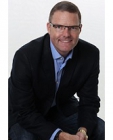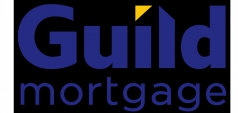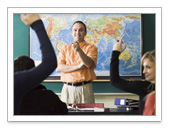
|
Follow Me On: |
 |
Derek Egeberg - NMLS#180899 Branch Manager, Loan Officer Guild Mortgage (NMLS 3274) Phone: (928) 247-9089 License: BK 0915245 derek.egeberg@guildmortgage.net www.guildyuma.com |
 | ||
| ||||
September 2009

|
The School Year's Back Fun Facts about Education
September is here, which means parents and kids around the country are back in the routine of homework and study time. In honor of the school bell ringing once more, here are some interesting facts about education from Every Learner. Back to Schoolmen Back to school–time to hit the books and get some new learnin'.
Today, back to school is a yearly ritual. In the Middle Ages, it was a change in thinking over the course of centuries, when European schoolmen rediscovered the classics and opened new worlds of knowledge for the West. From Church to University In Europe before the 12th century, education was mostly a church matter, and most schools were attached to monasteries or cathedrals. Most students were bound to be priests or monks, who needed to be able to read the Bible, copy manuscripts, and sing in the choir. Nobles' sons sat in on classes, but the school system was Catholic all the way. Modern "universities," which began to develop in the 12th century, grew out of the cathedral schools. Two in particular served as models: the University of Bologna, renowned as the preeminent place to study law, and the University of Paris, which pumped out popes and theologians. Welcoming churchmen and rich men alike, the new universities lived or died by their faculty's reputation. Famous teachers attracted thousands of students to their lectures and disputations–rhetorical showdowns in which one schoolman would "prove" a thesis, then answer objections put to him by another. All the arguments were in Latin, as was pretty much everything else. The students read Latin texts, listened to Latin lectures, and even chatted about the last night's (or knight's) adventures in Latin. From Apprentices to Masters Students generally started when they were 15 or 16. After arranging for lodging–there were no dormitories–freshmen had to find masters to study with. Education was like an apprenticeship. Students would attach themselves to a teacher, who often lectured out of his home. The students' fees paid the teacher's expenses. The apprenticeship focused on the liberal arts. First came the "trivium" of grammar (including Latin literature), rhetoric (with an emphasis on letter writing), and dialectic (logic and reasoning). Then came the "quadrivium" of arithmetic, geometry, astronomy (mixed with astrology), and music. After four or five years, a student could take oral exams to become a bachelor (Latin baccalaureus), or "novice." At this point, he was qualified to teach at one of the smaller schools. A doctorate could take several more years–10 in the case of theology, Paris's most difficult doctoral program. Read the Classics, Change the World The course of study could be arduous. The first lecture of the day was often at 5 a.m., and the last wouldn't end until 12 or 13 hours later. A number of students evidently grew impatient toward the end of the day. A law on the books in Padua prohibited students from pounding on their desks to force the teacher to dismiss class early. Despite the rigors, thousands of students flocked to the new universities. Education was exciting, thanks partly to the recent recovery of texts by Greek greats like Galen, Hippocrates, and–especially–Aristotle (preserved by Islamic scholars). This classical influx transformed European philosophy and theology, planting seeds that flourished in the centuries to come as the Renaissance, Reformation, and Scientific Revolution. The western world went back to school. Written by Mark Diller for Every Learner. Reproduced with permission. This article was provided through collaboration with Every Learner's "Knowledge News." To learn more, play quizzes, and read additional articles, visit http://everylearner.com and get a one-month membership at no cost to you. Copyright © 2002-2009 Every Learner, Inc. All rights reserved. | ||||||||||||||||||||||||||||||||||||
LO# 0915245 BK# 0904081 Corp NMLS# 3113 Corp CA# 4170013 CA-DOC180899 Licensed by the Department of Business Oversight under the California Residential Mortgage Lending Act. You are receiving a complimentary subscription to YOU Magazine as a result of your ongoing business relationship with Derek Egeberg - NMLS#180899. While beneficial to a wide audience, this information is also commercial in nature and it may contain advertising materials. INVITE A FRIEND to receive YOU Magazine. Please feel free to invite your friends and colleagues to subscribe. SUBSCRIBE to YOU Magazine. If you received this message from a friend, you can subscribe online. UNSUBSCRIBE: If you would like to stop receiving emails from Derek Egeberg - NMLS#180899, you can easily unsubscribe. Guild Mortgage (NMLS 3274) |
1375 W. 16th St., Suite B Yuma, AZ 85364 Powered by Platinum Marketing © Copyright 2024. Vantage Production, LLC. | |||||||||


